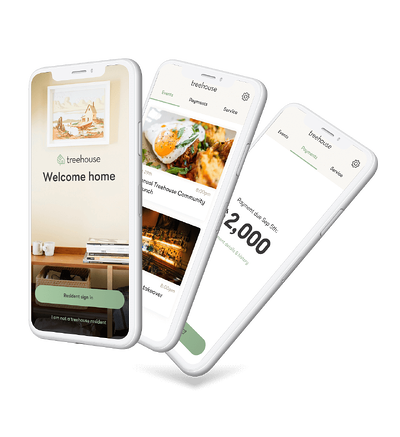BLOG
Benefits of Building iOS and Android Apps with React Native
The number of people with smartphones has grown exponentially in the past few years, and the mobile app market has grown along with it. However, in many cases building a high-quality mobile app still remains a time-consuming and lengthy process.
In order to accommodate these challenges, new technologies like React Native allow developers and designers to create cross-platform mobile apps for both Android and iOS simultaneously. But first, what is React Native, and what are the benefits of using it?
What is React Native?
React Native is an open-source JavaScript framework for building cross-platform mobile apps, originally based on the React library for creating user interfaces. The framework was first released by Facebook in 2015 and has since attracted a large and enthusiastic community of volunteer developers.
For developers and designers, the good news is that the components and designs you create can be used for both iOS and Android with minimal complications. Developers code in React Native using the JavaScript programming language, which is likely familiar to anyone who has ever done web development before. What’s more, because it’s backed by Facebook and has a strong user community, the React Native framework will continue to be supported into the foreseeable future.
Of course, there are several differences in developing apps for Android and iOS, including the following:
- Some elements may have a different appearance on both platforms.
- Android phones typically have a wider screen size than iPhones.
- There are differences in the operating system to consider-for example, the back button is always present in Android, while iOS may not have a home button.
The benefits of React Native are most pronounced if you want to launch a mobile app quickly for both Android and iOS phones. On the other hand, if one of the two platforms isn’t a priority, then you will likely want to go with a different stack.
3 Benefits of Building Android & iOS Apps at the Same Time
1. Save overall time and effort
Recreating an iOS mobile app for Android, or vice versa, is a highly time- and labor-intensive endeavor. Apps like Fortnite and HQ Trivia, just to name a few, have had to unexpectedly delay their Android release.
With React Native, you only need to build your mobile app one time, rather than go through the development process twice. For example, you can implement a feature and test it on both platforms throughout the development. The extra time you put into React Native right now will save you a great deal of time down the road.
2. Launch to a larger audience more quickly
By using React Native, you can reach both Android and iOS audiences more quickly. The mobile operating system market share is still fairly split. Android currently makes up three-fourths of the global smartphone market, but the numbers vary wildly by country. In the U.S., for example, iOS systems have just under a 60 percent share; iOS also dominates in countries like Canada, the UK, and Australia.
Regardless of your app’s target market, ignoring one or the other platform doesn’t make much business sense. Using React Native lets you expend less time and effort for greater results.
3. Catch more bugs and performance issues faster
There are several types of bugs and fixes that may need to be addressed on a new app that developers may not easily realize unless they are also testing the app on a different operating system.
By developing an app for both Android and iOS simultaneously, you can know that any performance or operating issues are caught as early as possible by examining the app from both Android and iOS perspectives.
Simultaneous Android/iOS App Launch: Client Example
Using React Native, like any other mobile app development project, starts with prototypes and high-fidelity designs that facilitate rapid iteration and experimentation. Next, the desired features are chunked into vertical slices, so that developers can focus on one feature at a time using a production-ready process.
One of Very’s recent clients was developing a co-living app for apartment residents to do things like view nearby events, make rent payments and request maintenance fixes. Early on in the project, we initially started to build out the iOS app first with the intention of launching the Android version soon after. We quickly realized that in order for all of the residents to have the app upon launch, we needed to launch on both iOS and Android at the same time.
Looking at the project estimates, our engineers realized that the time to develop on React Native was shorter than the time to build out the Android app after the iOS release.

Using React Native helped Very deliver both versions of the app on time before the scheduled release. What’s more, because our developers tested the app on both iOS and Android devices, bugs and performance issues were much easier to catch.
Consider Simultaneous App Launches
React Native is something that should be seriously considered when needing to launch both iOS and Android apps simultaneously. Though it requires a little more budget up front, being able to develop and test on both platforms at the same time will help speed things along and catch bugs more quickly.
Here at Very, we work to create both Android and iOS mobile apps for our clients, and whenever possible, we build them at the same time. To learn more about what we can do for your business, get in touch with our team for a consultation.









